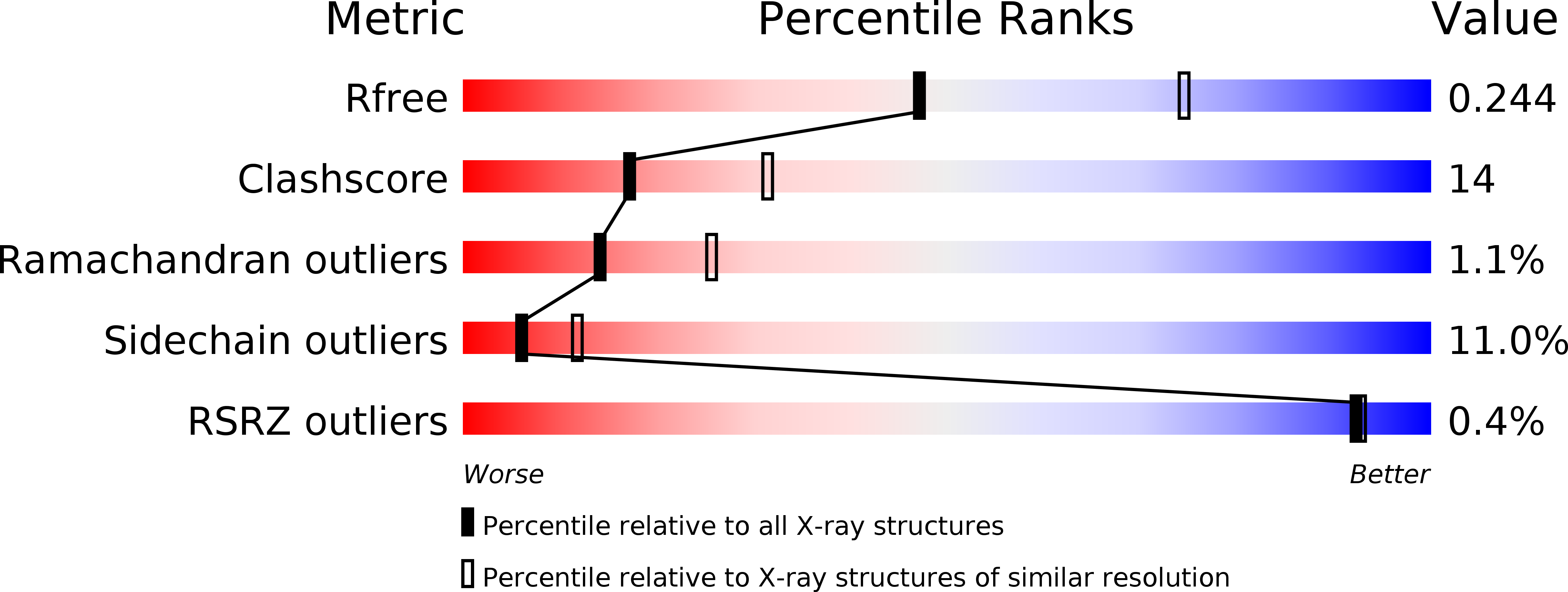Structure and function of allophanate hydrolase.
Fan, C., Li, Z., Yin, H., Xiang, S.(2013) J Biol Chem 288: 21422-21432
- PubMed: 23754281
- DOI: https://doi.org/10.1074/jbc.M113.453837
- Primary Citation of Related Structures:
4ISS, 4IST - PubMed Abstract:
Allophanate hydrolase converts allophanate to ammonium and carbon dioxide. It is conserved in many organisms and is essential for their utilization of urea as a nitrogen source. It also has important functions in a newly discovered eukaryotic pyrimidine nucleic acid precursor degradation pathway, the yeast-hypha transition that several pathogens utilize to escape the host defense, and an s-triazine herbicide degradation pathway recently emerged in many soil bacteria. We have determined the crystal structure of the Kluyveromyces lactis allophanate hydrolase. Together with structure-directed functional studies, we demonstrate that its N and C domains catalyze a two-step reaction and contribute to maintaining a dimeric form of the enzyme required for their optimal activities. Our studies also provide molecular insights into their catalytic mechanism. Interestingly, we found that the C domain probably catalyzes a novel form of decarboxylation reaction that might expand the knowledge of this common reaction in biological systems.
Organizational Affiliation:
From the Key Laboratory of Nutrition and Metabolism, Institute for Nutritional Sciences, Shanghai Institutes for Biological Sciences, Chinese Academy of Sciences, Shanghai 200031, China.

















